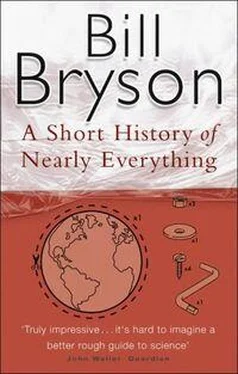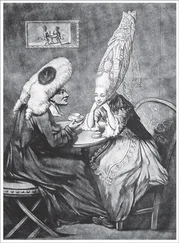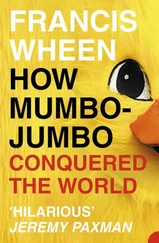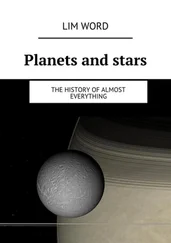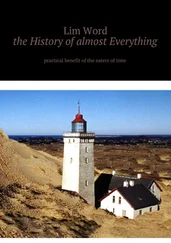Needless to say, almost no one in the audience had the faintest idea what he was talking about. Encouraged by his friends to expand his theory, in the touching hope that he might somehow stumble onto clarity in a more expansive format, Hutton spent the next ten years preparing his magnum opus, which was published in two volumes in 1795.
Together the two books ran to nearly a thousand pages and were, remarkably, worse than even his most pessimistic friends had feared. Apart from anything else, nearly half the completed work now consisted of quotations from French sources, still in the original French. A third volume was so unenticing that it wasn’t published until 1899, more than a century after Hutton’s death, and the fourth and concluding volume was never published at all. Hutton’s Theory of the Earth is a strong candidate for the least read important book in science (or at least would be if there weren’t so many others). Even Charles Lyell, the greatest geologist of the following century and a man who read everything, admitted he couldn’t get through it.
Luckily Hutton had a Boswell in the form of John Playfair, a professor of mathematics at the University of Edinburgh and a close friend, who could not only write silken prose but-thanks to many years at Hutton’s elbow-actually understood what Hutton was trying to say, most of the time. In 1802, five years after Hutton’s death, Playfair produced a simplified exposition of the Huttonian principles, entitled Illustrations of the Huttonian Theory of the Earth . The book was gratefully received by those who took an active interest in geology, which in 1802 was not a large number. That, however, was about to change. And how.
In the winter of 1807, thirteen like-minded souls in London got together at the Freemasons Tavern at Long Acre, in Covent Garden, to form a dining club to be called the Geological Society. The idea was to meet once a month to swap geological notions over a glass or two of Madeira and a convivial dinner. The price of the meal was set at a deliberately hefty fifteen shillings to discourage those whose qualifications were merely cerebral. It soon became apparent, however, that there was a demand for something more properly institutional, with a permanent headquarters, where people could gather to share and discuss new findings. In barely a decade membership grew to four hundred-still all gentlemen, of course-and the Geological was threatening to eclipse the Royal as the premier scientific society in the country.
The members met twice a month from November until June, when virtually all of them went off to spend the summer doing fieldwork. These weren’t people with a pecuniary interest in minerals, you understand, or even academics for the most part, but simply gentlemen with the wealth and time to indulge a hobby at a more or less professional level. By 1830, there were 745 of them, and the world would never see the like again.
It is hard to imagine now, but geology excited the nineteenth century-positively gripped it-in a way that no science ever had before or would again. In 1839, when Roderick Murchison published The Silurian System , a plump and ponderous study of a type of rock called greywacke, it was an instant bestseller, racing through four editions, even though it cost eight guineas a copy and was, in true Huttonian style, unreadable. (As even a Murchison supporter conceded, it had “a total want of literary attractiveness.”) And when, in 1841, the great Charles Lyell traveled to America to give a series of lectures in Boston, sellout audiences of three thousand at a time packed into the Lowell Institute to hear his tranquilizing descriptions of marine zeolites and seismic perturbations in Campania.
Throughout the modern, thinking world, but especially in Britain, men of learning ventured into the countryside to do a little “stone-breaking,” as they called it. It was a pursuit taken seriously, and they tended to dress with appropriate gravity, in top hats and dark suits, except for the Reverend William Buckland of Oxford, whose habit it was to do his fieldwork in an academic gown.
The field attracted many extraordinary figures, not least the aforementioned Murchison, who spent the first thirty or so years of his life galloping after foxes, converting aeronautically challenged birds into puffs of drifting feathers with buckshot, and showing no mental agility whatever beyond that needed to read The Times or play a hand of cards. Then he discovered an interest in rocks and became with rather astounding swiftness a titan of geological thinking.
Then there was Dr. James Parkinson, who was also an early socialist and author of many provocative pamphlets with titles like “Revolution without Bloodshed.” In 1794, he was implicated in a faintly lunatic-sounding conspiracy called “the Pop-gun Plot,” in which it was planned to shoot King George III in the neck with a poisoned dart as he sat in his box at the theater. Parkinson was hauled before the Privy Council for questioning and came within an ace of being dispatched in irons to Australia before the charges against him were quietly dropped. Adopting a more conservative approach to life, he developed an interest in geology and became one of the founding members of the Geological Society and the author of an important geological text, Organic Remains of a Former World , which remained in print for half a century. He never caused trouble again. Today, however, we remember him for his landmark study of the affliction then called the “shaking palsy,” but known ever since as Parkinson’s disease. (Parkinson had one other slight claim to fame. In 1785, he became possibly the only person in history to win a natural history museum in a raffle. The museum, in London’s Leicester Square, had been founded by Sir Ashton Lever, who had driven himself bankrupt with his unrestrained collecting of natural wonders. Parkinson kept the museum until 1805, when he could no longer support it and the collection was broken up and sold.)
Not quite as remarkable in character but more influential than all the others combined was Charles Lyell. Lyell was born in the year that Hutton died and only seventy miles away, in the village of Kinnordy. Though Scottish by birth, he grew up in the far south of England, in the New Forest of Hampshire, because his mother was convinced that Scots were feckless drunks. As was generally the pattern with nineteenth-century gentlemen scientists, Lyell came from a background of comfortable wealth and intellectual vigor. His father, also named Charles, had the unusual distinction of being a leading authority on the poet Dante and on mosses. ( Orthotricium lyelli , which most visitors to the English countryside will at some time have sat on, is named for him.) From his father Lyell gained an interest in natural history, but it was at Oxford, where he fell under the spell of the Reverend William Buckland-he of the flowing gowns-that the young Lyell began his lifelong devotion to geology.
Buckland was a bit of a charming oddity. He had some real achievements, but he is remembered at least as much for his eccentricities. He was particularly noted for a menagerie of wild animals, some large and dangerous, that were allowed to roam through his house and garden, and for his desire to eat his way through every animal in creation. Depending on whim and availability, guests to Buckland’s house might be served baked guinea pig, mice in batter, roasted hedgehog, or boiled Southeast Asian sea slug. Buckland was able to find merit in them all, except the common garden mole, which he declared disgusting. Almost inevitably, he became the leading authority on coprolites-fossilized feces-and had a table made entirely out of his collection of specimens.
Even when conducting serious science his manner was generally singular. Once Mrs. Buckland found herself being shaken awake in the middle of the night, her husband crying in excitement: “My dear, I believe that Cheirotherium ’s footsteps are undoubtedly testudinal.” Together they hurried to the kitchen in their nightclothes. Mrs. Buckland made a flour paste, which she spread across the table, while the Reverend Buckland fetched the family tortoise. Plunking it onto the paste, they goaded it forward and discovered to their delight that its footprints did indeed match those of the fossil Buckland had been studying. Charles Darwin thought Buckland a buffoon-that was the word he used-but Lyell appeared to find him inspiring and liked him well enough to go touring with him in Scotland in 1824. It was soon after this trip that Lyell decided to abandon a career in law and devote himself to geology full-time.
Читать дальше
